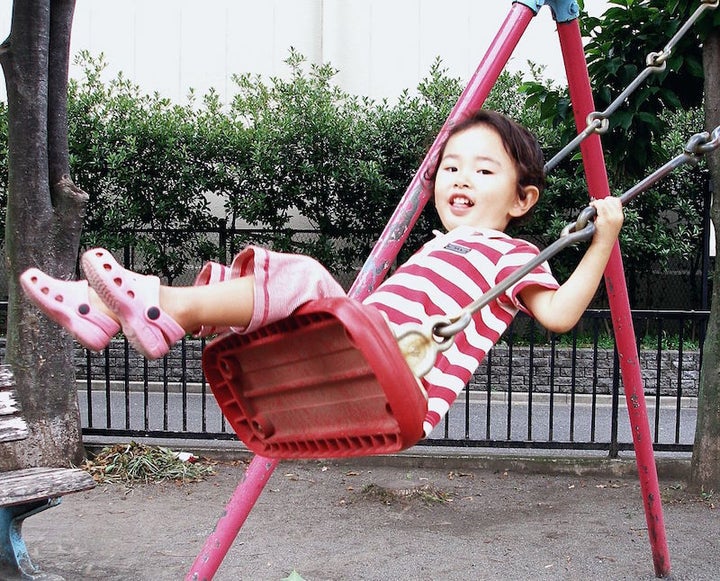
Recently, I read an article by Olaf Jorgenson, Head of School at Almaden Country School—about what educators and researchers call The Summer Slide.
Why not pair his thoughts with another playground metaphor, I thought. Jorgenson can take the slide; I’ll take the swings. And together we’ll make our case—and provide the totally fun solutions—for keeping a kids’ summer reading moving in the right direction.
Jorgenson agreed. Here’s his original take on the slide:
The Summer Slide
Ah, childhood memories of summer—sleeping in, warm days at the beach, camp outs, visits from relatives, reading at least four books to maintain grade level literacy and learning skills . . . Huh?
Many people view summer as a time for children to play, pursue interests and take a break from the rigors of school. However, as Malcolm Gladwell asserts in Outliers, “America doesn’t have a school problem, it has a summer vacation problem.”
Research shows that during the long, lazy days of summer, children who aren’t encouraged to read experience the “Summer Slide,” a measurable drop in reading and learning skills that has been documented in major studies.
Researchers have established that Summer Slide reading losses are cumulative, which creates a widening gap between more- and less-proficient readers. By the end of fifth grade, the Summer Slide results in as much as a two-year gap in reading ability between children who read enough during the summer and those who don’t.
How Can Parents Prevent the Summer Slide?
Regardless of ability level or socioeconomic status, children who read four or more age-appropriate books over the summer maintain their reading fluency, performing substantially better on reading comprehension tests in the fall than those who don’t read enough.
What’s more, children who read 10-20 books over the summer are shown to actually improve their reading skills. Summer reading has the most impact on students in kindergarten, first and second grades; this is when children learn to read, and from third grade onward they “read to learn.”
The Summer Slide is symptomatic of our growing crisis in literacy. Across the country, America’s children are reading less than ever before. After age 8, reading frequency in children begins to decline compared with historical levels, and continues to decrease through the teenage years.
While we may tend to blame electronic media including computers, iPods and TV, the main reason children report not reading for fun more often is simply that they struggle to find books they like. Research shows that nearly 90 percent of children indicate their favorite books are the ones they choose themselves. Consequently, parents should provide children with easy access to books during the summer and school year, whether that means frequent library visits or building up a home library.
So, this summer, do your children a favor; along with late nights and sleeping in, trips to campgrounds and amusement parks, throw in a few good books. Four or more good books, to be precise.
The above is a modified reprint of an article on LinkedIn Pulse, by Olaf Jorgenson, Head of School at Almaden Country School: Don’t Let Your Children Experience “Summer Slide.”
10 Delightful Ways to Keep Your Child’s Summer Reading in Swing
As Jorgenson has discussed (above), it’s really important to keep kids’ reading from sliding over the summer. Yet, traditionally, summer is for fun, relaxation, warmth, even magical moments—which can feel at odds with the idea of continued learning.
What’s a parent to do?
I suggest going with the summer mood: Put the “reading minutes” log aside and fold in a few magical experiences kids can lead (and love). What kinds of experiences might work? I asked our Tweetspeak parent and teacher community for fun ideas. Here are ten for you to try:
1. Make a reading nook together, indoors or out.
Bethany Rohde’s kids started this trend, and I think your kids might find it magical, too. There’s nothing like a fun, dedicated space, to get the reading inspiration going. This special nook—crafted by the kids—came with signs, a blankie, a tent, a snack area, and even an explanation manual for how to use the space. Part of the opening celebration included one child’s reading of a rock field guide, with gorgeous words like jasper and lapis!
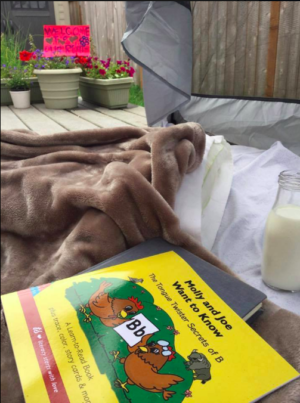
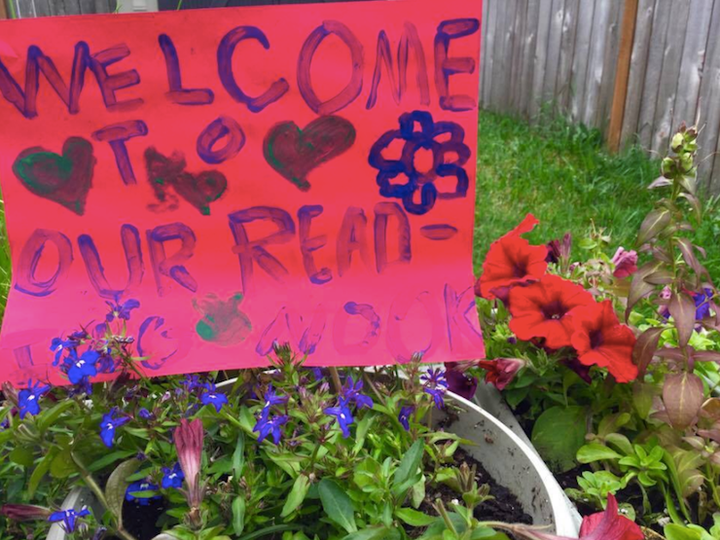
2. Teddy bear picnic
You can do this simply, or you can go all out. Either way, we suggest that a centerpiece activity be the reading of a teddy bear book. Two of our community’s favorites are:
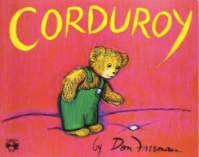
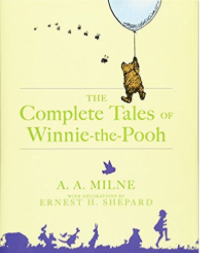
3. Library treasure hunts
Writer and teacher Callie Feyen loves to do library treasure hunts with her kids. She’s done them for Newbery Award books and Caldecotts. But our favorite is the poet hunt she did one July, for Take Your Poet to Work Day. For the full, adorable recap of how one treasure hunt turned into a full-fledged story, art, and writing time, check out Take Your Poet to Work Day: Treasure Hunt in the Library.
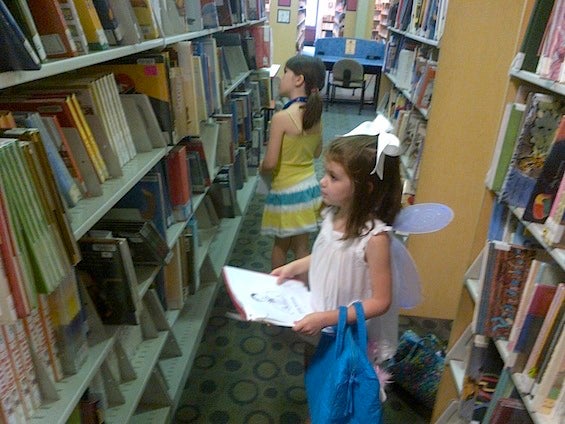
4. Invite a book to dinner.
What do your children love? Invite a book along for the activity or ride. My own girls love the delight of a shared dinner, so this summer I’m going to try out an invitation mailbox, to invite a few good books to dinner. Here’s how I see it going:
• Have the kids make a special book invitation mailbox, complete with flag
• When the kids want to invite a book to dinner, they can make a little invitation addressed to the book, pop the invitation into the mailbox and raise the flag. Invitations can include details about who will read the book and when the book should arrive for the occasion.
• Set a special place at the table for the book on the special day.
• Put the book in its special place.
• Invite the designated reader to read the book to everyone after dinner.
5. Puppet show retellings
It’s no secret that my Tweetspeak community loves a good popsicle-stick puppet (or poet). After reading a story of your child’s choice, provide paper, scissors, crayons, popsicle sticks, and glue—to recreate the main characters of the tale. Then encourage your child to do a retelling of the story with the puppets in hand. (Alternately, you could reread the story with the child, letting the child and the puppets take the dialogue parts.)

6. Tea talks
A variation on the book commercial and a book club, tea talks surpass both (imho), because they include one of my big loves: tea!
Dress up or go casual. And remember that boys love teatime, too.
For the simplest tea experience, just bring out the tea and cookies. Invite your child to do a reading of poems, a picture book, or even a whole chapter from a new favorite. Discussing the poems or story is optional. (Some kids prefer to experience literature rather than talk about it.)
7. Little friends story time
Early childhood educator Donna Falcone gave me this idea and the next one (number 8)—ideas that draw on children’s strong identification with their dolls and stuffed animals. It’s especially beneficial for children who still need to develop reading fluency but who claim not to need or want to read “baby books.”
Just help the child make a daily date with his or her dolls or stuffed animals, at a special time that will create a tradition. Bed time or after lunch or breakfast are easy times to remember. Set up a single “friend” or a whole crowd, and have the child read the stuffed animals’ “favorite” story.
Not sure that a plastic, plush, or cloth audience has the power of a real one? Try this yourself. You might even find yourself with a new daily ritual! Or, simpler yet, just read daily to your child—and invite your child to read to you—at one of these designated times.
8. Dolly goes on vacation (with a book, of course)—and sends postcards!
Find a friend or grandparent who’s willing to host a special doll or stuffed animal, along with a companion book, for a week—and who’s also willing to write some real postcards and maybe do some Instagram posts or Facetime with your child.
Send the doll or stuffed animal and book to the host, and wait for the vacation postcards to arrive. (The host should be instructed to write and Instagram about the vacation capers and story times of the doll or stuffed animal. Be sure to print, so the child can read his or her own postcard.)
It’s fun to get real mail!
9. We’re in a book!
Another idea from Bethany Rohde (who loves the Mo Willems title We Are in a Book!), this experience helps a child read, retell, and identify with his chosen book. Here’s how it works:
• Read the book to the child, or have the child read the book.
• Invite the child to retell the story through drawings, adding himself into the story along the way.
• Invite the child to label key characters in the story, including himself.
10. Goin’ on Pilgrimages
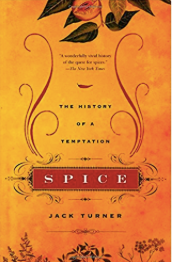
I began this tradition with my own kids, by embarking on a tea pilgrimage. This year, despite that my kids are now 17 and 20, we’re at it again with a spice pilgrimage. Taste-testing will be involved.
Overall, the idea of a “pilgrimage” is to choose a theme to explore for the whole summer. Reading books, visiting museums or community sites, creating experiences at home, and going to markets or restaurants can also be included depending on the theme you choose.
That’s it! 10 totally fun ideas to keep your kids’ summer reading in swing. Let me know if you have other ideas. We can bring them to the reading playground and let the kids enjoy.
This article is a modified reprint of an article that first appeared at Tweetspeak Poetry: 10 Delightful Ways to Keep Your Kids’ Summer Reading in Swing.